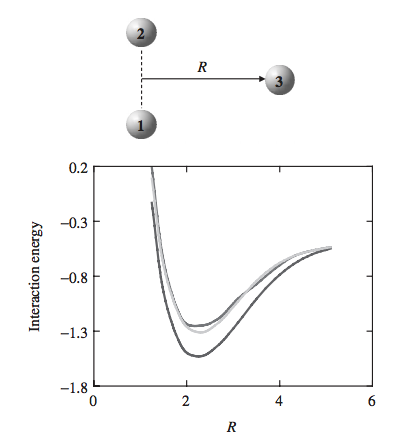in “Large Scale Molecular Dynamics, Nanoscale and Mesoscale Modeling and Simulation,” pp. 169–188, eds. R.B. Ross and S. Mohanty (Wiley, Hoboken, 2008)
In this paper we discuss the development, validation, and application of analytic potential energy functions for simulating Al nanoparticles. We consider six functions, the Ercolessi-Adams, Mei‐Davenport, Sutton‐Chen, and Streitz‐Mintmire functions from the literature and the NP-A and NP-B functions from our group. We find that the NP-A and NP-B potential energy functions, which were fit to a set of 808 energies and geometries for Al clusters and nanoparticles and to a combination of theoretical and experimental data for three bulk phases of metallic Al, are more accurate for Al nanoparticles than are the functions from the literature, which were mainly (but not entirely) parameterized for the bulk. We have used the NP-B potential to simulate liquid Al nanodroplets to study the size dependence of their densities, thermal expansivities, and particle shapes. The nanoparticle densities were computed by first computing the volumes using overlapping van der Waals spheres. We then used the densities to compute the coefficient of thermal expansion for nano-Al droplets; this coefficient was found to increase with increasing particle size. We have also shown that particle shape is size dependent, with smaller particles being prolate spheroids.
